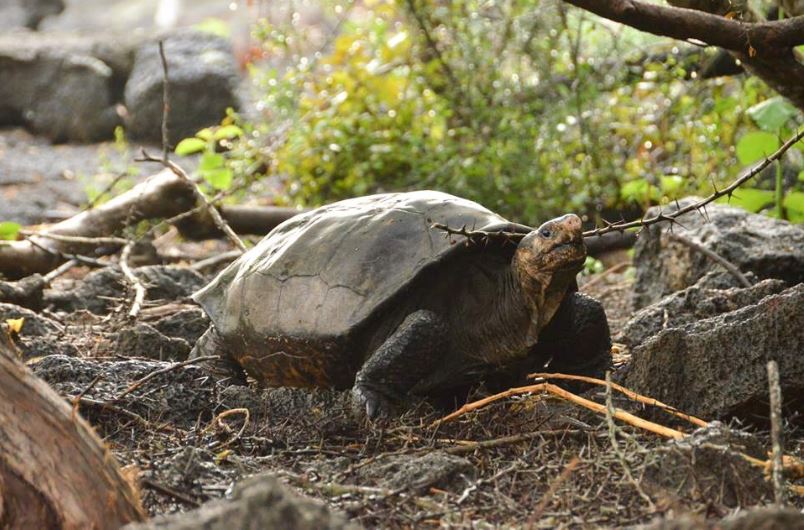
The last known Fernandina Giant Tortoise (Chelonoidis phantasticus) was seen alive was 1906, CNN reported.
An adult female, Chelonoidis phantasticus, believed to be more than a century old was discovered alive on February 17 during an expedition by the Giant Tortoise Restoration Initiative (GTRI).
Washington Tapia, GTRI director and expedition leader, said that genetic studies are being carried out to "reconfirm" that the tortoise discovered belongs to the Fernandina Island species.
BREAKING NEWS! GC’s own @wacho_tapia just returned from Fernandina Island in #Galapagos, where they discovered a female #tortoise. Tortoises on Fernandina have been thought to be extinct for over 100 years, so this is a monumental finding! Photos © GNPD, W. Tapia pic.twitter.com/fhQpIzsHmM
— Galápagos Conservancy (@savegalapagos) February 20, 2019
Authorities believe she is not alone, as tracks and scent of other tortoises, believed to be of the same species, were also observed by the team.
How a 100-year-old tortoise single-handedly saved his species from extinction
Conservationists have taken measures to save the tortoise by moving it to a breeding centre on the nearby island of Santa Cruz.
The Fernandina Giant Tortoise is one of 14 giant tortoise species native to the Galapagos Islands and also the most endangered.
Many species of Galapagos tortoises have previously been killed over for food and for their oil over the past two centuries, according to the Galapagos Conservancy.
"This encourages us to strengthen our search plans to find other [tortoises], which will allow us to start a breeding programme in captivity to recover this species," said Danny Rueda, director of the Galapagos National Park.
The Galapagos Islands are an archipelago of 19 islands roughly 1,000km near the Ecuadorian coast in the Pacific Ocean. Fernandina, the third largest and youngest of the islands, remains the most volcanically active.
The islands of Galapagos have been protected as a national park since 1959 and were also declared a Unesco World Heritage Site in 1978.
[/fbvideo]
This article originally appeared on CNN



















1713904359-0/burn-(1)1713904359-0-270x192.webp)
















1713853507-0/MalalaHilary-(2)1713853507-0-270x192.webp)







COMMENTS (1)
Comments are moderated and generally will be posted if they are on-topic and not abusive.
For more information, please see our Comments FAQ